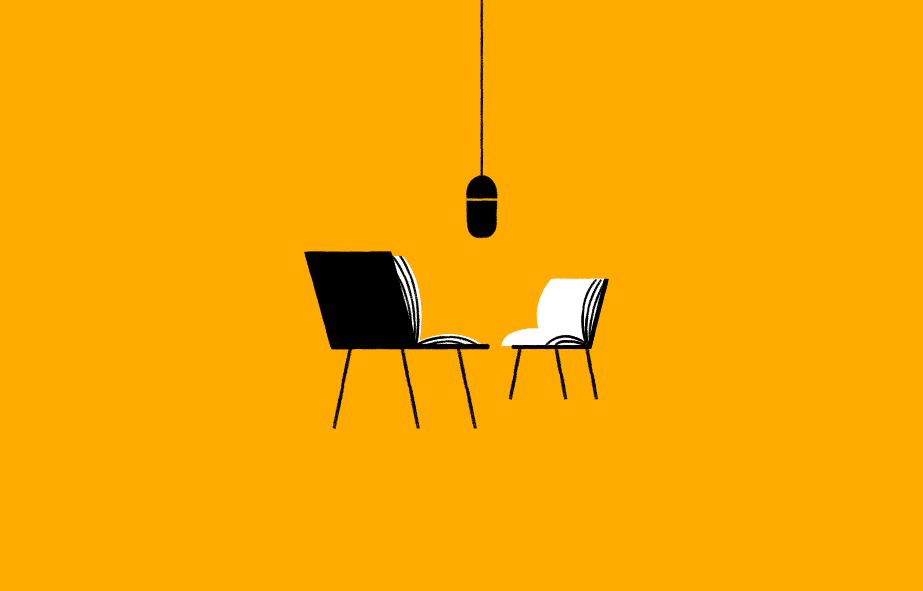- Collected
- Article
The Cottage
Stories and structure

- 3 October, 2016
- Cynan Jones
It’s always about structure. What we didn’t expect, when we started the job, were the walls from shoulder height to be built of mud and straw. We put the sledgehammers down.
The plasterboard we were taking off had the look of leather. Twenty or so years of nicotine, grease from cooking and being lived around had turned it almost to a new substance. It didn’t break like normal plasterboard. It sort of conceded, gave up with a crump, then hung on. The local tip restricted you to dumping a total of two full sheets. We broke it up and stuffed it into feed sacks. I gave up counting how much we removed after the seventh car load. The guys at the tip were good about it.
I’d first seen the cottage as an eleven-year-old when my parents were looking to move home. They couldn’t afford the whole place, but the seller agreed to split the land and we moved into the bungalow he’d built on a half-acre garden. For a while after we moved, the ruin and the fields with it were a private playground. The cottage was weighed down under a rusted tin roof that spilled a nasal hair of thatch. The walls bellied like cows’ stomachs. I’m going to buy this place one day, I promised. A year later, the cottage was sold. I stayed patient until I could buy it myself.
Having taken the skin off the walls, we could see the bones. It brought back the memory I had of the bellying walls. There wasn’t a straight line or square angle to the place. It was such, actually, that when we took a true line from a spirit level, to fit something or measure a mark, it just looked wrong. A lot of the time we went with our eye. It was more honest.
With the inside stripped back, the question became: what is possible? What can we do with this space? There would be no room (nor money) for architect’s drawings. We just went with our gut. We wanted very much to keep some of the character while making a usable place.
We lifted the kitchen ceiling to eight foot, hanging it off the roof trusses I’d helped put in as a teenager, working for 50p an hour as a labourer when the buyers – Jim and Pauline – went about the previous renovation. Sorting through stuff that was left in the house, I found a picture of myself on the roof with Jim and the second builder. ‘Three Wise Monkeys’, someone had written on the back.
I kicked the old ceiling down, which was hanging amongst those trusses, and the whole house seemed to sway, like a tree canopy. What I didn’t know, putting the trusses in, was that they were cheap and too distantly spaced. With every piece of ceiling (more plasterboard) that crashed away to leave a drop below me, the experience grew more disconcerting. It wasn’t a big drop, but you had to be sure of your feet.
Much discussion was had about the lateral beam that crossed the kitchen from front to back, a single piece of oak at the height of the original ceiling. Any visitor over 5’8” will brain themselves on it, I guarantee. Hopefully just the once. But it’s staying, for two reasons.
It beds back right into the cob – the hard-packed mud and straw – and possibly holds the whole house together. It’s also a thing of beauty. Not aesthetically, perhaps. But when it was growing, Britain was under threat from Napoleon. And when it was cut down, and planed into the beam, it might have been handled by men who that night went home, donned their wife’s clothing, and went out to set fire to a toll gate. I like to think so anyway. It certainly has character. When I tried to drive a nail into the beam, the nail bent.
Another big question was the kitchen floor. Quarry tiles laid on bare earth, which someone, at some point, has covered in a sort of resinous paint. An ugly substance that has worn off in places or otherwise been walked into an impenetrable coat. The day after the hottest day of the year, we came into the cottage to find the kitchen floor brimming with water. It looked washed. The damp had literally sweated out of the earth underneath. Standing to the tops of our soles in water, there was again talk of ripping the floor out. ‘They’ve got to come up’, someone said. I’d been the floor’s biggest doubter until then, but something in me changed. ‘They’re staying’, I said. That was that.
We unleashed all sorts on those tiles. Vinegars. Acids and chemicals. Bright lights. My cook’s blow torch. Eventually, I discovered the ‘stuff’ (which by then we couldn’t refer to without prefix) could, could, be chipped off if you struck it right with a hammer and chisel. The area of the kitchen floor is 200 square feet and the tiles are 9 inches square. It took about an hour a tile. It was clear the approach was insane.
Then we found the needle gun. The needle gun connects to an air compressor, which repeatedly drives the gun’s bunch of iron rods into whatever surface you hold it against. The rods are loose like a handful of pick-up sticks, and about 3 or 4mm thick. You’d use the gun to take rust off the hull of a ship, for example. Like all these things, there’s a recommendation to work for twenty minutes at a time, with a decent break in between. Right.
We set the gun up with the compressor. It was an old compressor from the farm and the casing had failed so the air tank was partially astray. It also had a broken wheel, and another wheel entirely absent other than the injured-looking stub of an axle. The plug needed rewiring. When we got it going, the noise was extraordinary. But the Stuff split, shook, span off. I found earmuffs, a mask and some goggles and dragged the whole shebang into the kitchen. ‘I’ll do until coffee’, I said.
After an hour my teeth were loose in my head. I was exhausted and had a right arm like a Russian tennis player. I couldn’t see straight, and had dots in front of my eyes. I felt like I’d been masturbating for a month. But I’d done six tiles.
It’s perhaps luck that for 300 years the people who’ve taken it on haven’t had the money to level the place and start over again. But every now and then I feel the cottage has something to do with that. A gleeful complicity. It has quietly resisted fundamental alteration, like a strong story will once it reads right. And like a strong story, the building keeps throwing surprises at us. Making mention of its previous lives.
At times the utterances are not so nice. As when we took a lean-to away from the back wall. It housed three freezers, one of them spilling a glacier into the rest of the room, a moraine of long past-it food. The lean-to was accessed through what once served as the back door to the house, and the lock had gone. When I unscrewed the door furniture I found an Alsatian’s claw snapped off in the keyhole.
Other whispers are fascinating, and beautiful. The crystals, for example, in the smaller room in the less old part of the house, that appear through the paint in the places where the sun catches the wall through the window. Soft, forming in the way frost forms on aeroplane glass. It turns out this part of the house was used for salting, with the rest of the space home to cattle. The salt is still in the walls. Shyly finding its way out, as if to see the new work.
The inside, now, is nearly there. There’s painting, endless painting; and the putting on of cupboard handles; and shortening of curtains. But a person can sleep, shower and cook. Can inhabit the place. The outside will take time, but it feels calm there, nonetheless. The surrounds of the cottage seem to stoically accept the work going on. Another incarnation. Plants are taking; the ground is recovering. There’s just the porch to rip down. And rebuild. And the missing slates to replace. And the chimney to reopen. There are the walls to repaint, the bargeboards, the fascias. The gutters to repair and rehang. But it’s there. Nearly there. And though host to new shapes inside, that strange 300-year-old oval of stone, mud and straw has survived, intact, once again. A strong structure. And I’m sure, as I said, it’s complicit.
You might also like:
No facts, only versions
Memoirs are as much about what is excluded as what is included. This edition examines how you can evoke the…
RLF Fellows’ News: April 2024
Publishing News RLF Fellow Trish Cooke’s new children’s book, The Magic Callaloo, is set to be published by Walker Books…
Susan Fletcher on outsiders in fiction – literal and imagined
I’ve always known that I’ve preferred to be outside. To be an outsider – literally, and, specifically, amongst wild places…


